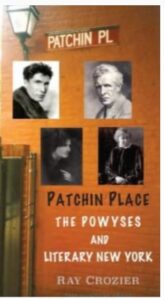The research was based in the Department of Special Needs Education, Oslo University. Principal Investigators Geir Nyborg, University of Oslo; Liv Heidi Mjelve, University of Oslo; Investigators: Anne Edwards, Oxford University; W. Ray Crozier, Cardiff University; Robert J Coplan, Carleton University: Gunnar Bjørnebekk, University of Oslo, Anne Arnesen, Norwegian Center for Child Behavioral Development, Oslo.
This five-year research project investigated teachers’ use of strategies to promote learning and shy development for shy elementary-school students. Stage 1 of the proj3ect collected interview and focus group from a sample of teachers who have successful experience of working with shy students. In the second stage, a questionnaire was constructed on the basis of the qualitative data collected in the first stage. The questionnaire was completed by a large sample of elementary-school teachers from across Norway. The findings from both stages appear in the publications listed below.
Publications include:
Mjelve, L. H., Nyborg, G., Edwards, A., & Crozier, W. R. (2019). Teachers’ understandings of shyness: Psychosocial differentiation for student inclusion. British Educational Research Journal, 45 (4), 681-697. doi: 10.1002/berj.3563
Nyborg, G., Mjelve, L. H., Edwards, A., & Crozier, W. R. (2020). Teachers’ strategies for enhancing shy children’s engagement in oral activities: Necessary, but insufficient? International Journal of Inclusive Education. doi: 10.1080/13603116.2020.1711538.
Mjelve, L. H., Nyborg, G., Arnesen, A., Bjørnebekk, G., Crozier, W. R., & Coplan, R. J. (2022). Characteristics of teacher-nominated shy students in Norwegian elementary schools. Journal of Research in Childhood Education. doi:10.1080/02568543.2022.2027582
Nyborg, G., Mjelve, L. H., Edwards, A., Crozier, W. R., & Coplan, R. J. (2022). Working relationally with shy students: Pedagogical insights from teachers and students. Learning, Culture and Social Interaction, 2022, 33, 100610. doi:10.1016/j.lcsi.2022.100610
Mjelve, L. H., Nyborg, G., Arnesen, A., Crozier, W. R , Bjørnebekk, G.,& Coplan, R. J. (2022). Teachers’ strategies for managing shy students’ anxiety at school. Nordic Psychology doi: 10.1080/19012276.2022.2058072


